(August 1 to 21, 2008)
My friend Eugene Little Coyote invited me to his home. We’ve known each other and worked together on various of his projects for over 10 years, but never actually met in person. The trip was going to make up for that. Eugene is a Cheyenne from Suhtia band and lives near Lame Deer, on the reservation in what is now southeastern Montana – as he puts it, what is left of the land of his People. He has a beautiful wife, Judi, and seven children (among them twin boys, whom even he has troubles telling apart).
The reservation is approximately 444,000 acres of land – part of Cheyenne traditional territorial hunting range with the Black Hills about 150 miles east of it. It borders Crow reservation from the west and Tongue River from the east. There are about 4500 people living there, mostly in five major communities: small towns, of which Lame Deer is the largest.
I was flying away on the 1st and, after 18 hours of being “on the road”, I finally arrived to Billings. At the airport I’m anxiously waiting for my luggage, or rather one item from it: the plush horse about five feet long, which I couldn’t mail for the last six years. I will sleep easy though – the enormous plastic bag with big “special care” written on it (a big “thank you” to the nice lady from Lufthansa check-in in Warsaw here) appears with other bags and backpacks on the transmission belt.
– Somebody’s gonna be happy – a woman, who also waits for her luggage, comments. I pack my things and proudly head towards the airport exit, followed by stares of other passengers.
First shock: not a single cloud, it is extremely hot – it must be around 40 degrees Celsius. It’s dry though, so it’s not really bothering. Eugene with Judi arrive. Only a visit to the Walmart left, and we’re heading back to their home. Second shock are the distances: it is about 100 miles from Billings to Cheyenne reservation, about 2.5 hour drive. We arrive at 10 PM. Kids go crazy, already when chatting though IM, Gene was preparing me for this meeting. I can’t stop admiring how funny and cheerful, and yet how disciplined they are. The horse steals the show – it got named Flimsy. Eugene, after asking me about it way back earlier, got a genuine Russian “ushanka” (a.k.a. ushatka), a cap with ear flaps – red star included, of course.
My first sweat lodge. We gather in small, enclosed, semicircular structure around hot stones on which water is poured. I feel excellent. In part because of the “sweat”, in part because of surroundings: people here are extremely friendly and selfless. I will give away lots of rifles and blankets before I go (seriously though: blanket and hunting rifle, as well as horse, were traditionally very welcomed gifts in many plains’ tribes, so Cheyennes as well; they are, however, usually given “for ceremony” or as a thanks for extraordinary help). Cheyenne humor is also something unordinary, very direct, sometimes teasing a lot… And everything would be fine and well, if not for the storm after the sweat. A big one. With hail. With cherry-sized ice balls. To true amusement of participants I commented that “that’s what you get for letting a friggin’ tourist into sweat”. The joke was snappy, but reflected the way I felt then: guilty, because I was unprepared, didn’t know what to do (then) – truly believed the hail was some kind of punishment. Later though I reconsidered it might not be a punishment at all, but such a powerful event might have been an encouragement to be open for things that were yet to come…
One of main reasons for the invitation was the ceremony known to most white people as the sundance, of which Eugene was a “sponsor” and the “pledger” in. Not many non-Cheyenne are welcome to even observe this ceremony: usually just close friends of ones family. I wasn’t merely an observer, I was asked to help in setting it up and help around Eugene’s camp (he insisted on putting this here: it involved work). That was the way he wanted to thank me for what little help I could offer him when he needed support. The ceremony was also unusual in other aspect: for the first time in a very long all the traditional societies, all sundance priests and families, gathered to commence the ceremony together. First bold step in uniting of a very shattered tribe.
Before the ceremony, on August 3rd we move to the camp – usually until the end one should not leave it. We live in tents – the tipis are set for elders and people going through the ceremony. As the preparations progress I’m “hitching a ride” with Gene and his cousin Dana, when they need to find certain items needed for the ceremony around the country.
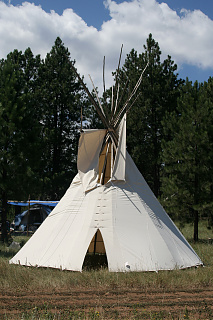 During one of these trips I finally get to know Eugene’s family – his mom, dad and younger brother, Joe. They have quite sizable land parcels near Ashland, close to Tongue River. While Eugene makes final arrangements towards the sundance, I reluctantly start to explore the surroundings. Suddenly something draws my attention: is it a moth? Upon closer inspection, I can’t believe my eyes – definitely NOT a moth, but something far more exciting – the biggest Skipper I’ve ever seen: Strecker’s Giant Skipper. It’s extremely timid and, to my dismay, I’m finally loosing it in tall grass before managing to take a photo.
During one of these trips I finally get to know Eugene’s family – his mom, dad and younger brother, Joe. They have quite sizable land parcels near Ashland, close to Tongue River. While Eugene makes final arrangements towards the sundance, I reluctantly start to explore the surroundings. Suddenly something draws my attention: is it a moth? Upon closer inspection, I can’t believe my eyes – definitely NOT a moth, but something far more exciting – the biggest Skipper I’ve ever seen: Strecker’s Giant Skipper. It’s extremely timid and, to my dismay, I’m finally loosing it in tall grass before managing to take a photo.
Except looking after the fire, so it won’t go out, and bringing food and drinks for camp visitors, some of my activities were rather unusual: scrubbing buffalo skull, moving tipi poles, erecting tipi, helping to butcher a buffalo (fresh liver – yummy, although I smelled with its meat and stomach contents for a few days after that), helping to erect the center pole (an enormous, few ton Cottonwood trunk) in medicine lodge (lesson learned: don’t be in strike range when it suddenly banks to a side – hurts a little). Getting back to the buffalo for a while, nobody of us butchered one, so a friend, Neil Beartusk, came to instruct us. That was he who opened it and took its guts out. When we were tasting the liver, Neil dipped his palm into buffalo’s blood and with approached me with sly grin. “Oh no, he’s gonna do it” went only through my mind before he did it, stamped bloody imprint on my chest… “Now you’re initiated” – harrrrrrr!…
Life in a camp is slow-paced and focuses on preparing meals for visitors and visiting other camps. When I’m free I’m wandering around the country, photographing critters and plants. The grasshoppers alone are of at least 16 species with enormous quantity. Butterflies and moths are a different story, not to mention spiders: once we found a 6-centimeter, gray and fuzzy Wolf Spider (until this day Eugene teases me how high I jumped when it broke free on my hand). To that counts a beautiful Painted Turtle and juvenile Bull Snake. In the evening you could hear a pack of coyotes near the camp. And did I mention wild horses?
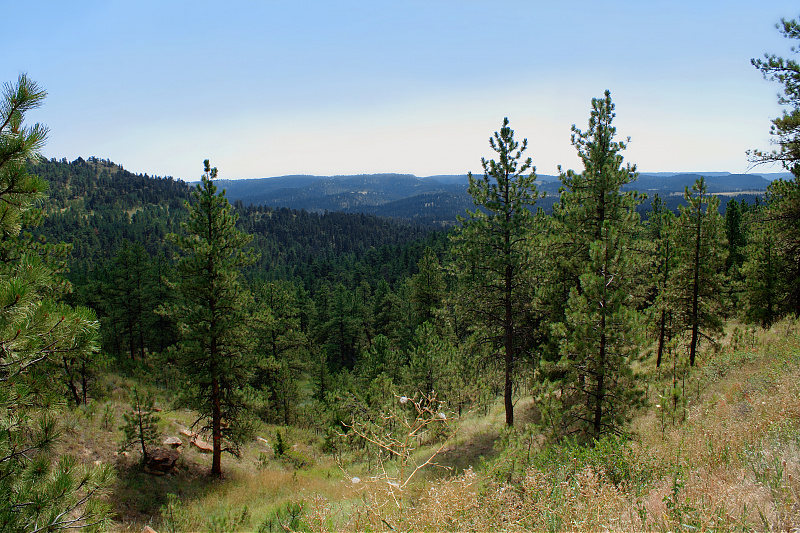 Cheyenne land consists mostly of rich in pine timber hills and vast grassy meadows scattered with creeks and drainage. Sagebrush is very common there and, so characteristic to that terrain, “red earth”.
Cheyenne land consists mostly of rich in pine timber hills and vast grassy meadows scattered with creeks and drainage. Sagebrush is very common there and, so characteristic to that terrain, “red earth”.
The vast size is humbling: what from the distance seems to be a small raise turns to be a hill several dozens of feet high. Small pockets of bushes are in reality full grown pine trees. There are, of course, some places one shouldn’t miss: the unforgettable view of swirling Tongue River from lookout point on Kelty Ridge, and the Morning Star View (although I learned its name a whole year later) – landscape you can marvel at while driving through Skyline Drive, an unpaved back road starting from Lame Deer, going east through the hills and ridges parallel to route 212 and ending in Rabbit Town. In Crazy Head Springs you can drink crystal clear, spring water.
As Eugene needs to follow ceremonial protocol and can’t often be around the camp, his friend and mentor Tony Prairie Bear helps me a lot to adjust and feel welcome. He takes me for a ride around the country. He’s a great guy, always helping, always keeping a great sense of humor (“this is our white captive!”). I’m really enjoying being with him. And in deed, I really need some companion often, cause the dreadful feeling of alienation creeps in fast. “What am I doing here? What am I trying to prove? Trying to be a Cheyenne? What’s my place here? Maybe I should just leave, give all of this up, go away. I don’t belong here. But then, what about Eugene? What gives me right to interfere with his ceremony? Who am I to shift his attention on me?” He did warn me not to have my expectations set too high, but does that mean I should not have any at all?. It’s not easy to pretend I’m all right, sometimes I barely speak to anyone – hoping, that nobody notices the difference (I can always blame language barrier, just in case).
An unpleasant incident involving me doesn’t improve my esteem. Gene’s friend passes his(?) request to make a picture of the medicine lodge at night. I resist – I know I shouldn’t, I know it’s forbidden – but at the end the temptation prevails. I set up the camera on a little stump, but it’s too dark – autofocus keeps hunting and I can’t manually set it right. Somebody notices me, somebody passes it on – and I’m apprehended by a few large men from Dog society, the militia force in the camp. Questions, explanations. They demand the memory card from my camera. After a heated argument they back down, but the news is out. In the end I’m submitting the card myself and retreat to my tent for a long, cold night.
I don’t want to leave my tent in the morning – Eugene’s family is startled. Explanations again – I’m not feeling bad, because I had to give the card to prove my innocence. I feel bad because I surrendered to the temptation – I didn’t need that picture, I didn’t want it. There’s an unpleasant echo of Tony’s words “white captive”: I sure feel like that now, prisoner of the ceremony. Even though the card will be returned and my name (unofficially) cleared, I’m not feeling any better.
Luckily very often there’s an opportunity to get my thoughts focused on something else. Usually it’s because of Gene’s kids – always ready to play, their happiness is simply infectious. Or there’s Tony again, giving me another, simple gift. I feel that thick shell I used to hide in is now slowly breaking apart… Later Eugene told me that it’s not easy that Tony would call one friend, and that he’d seen something good in me. I don’t know what that might be, but I surely hope it’s really within me.
The camcorder I (accidentally, actually) brought to the camp becomes quite a popular item among the kids. I will eventually find almost a hour long document of the life in the camp, seen through the eyes of one of Eugene’s middle daughter.
Although I’m not going to describe the ceremony itself (I was asked for discretion), however what I can say: it was incredible. While the first four days in the US were like a wonderful dream you don’t want to wake up from, the ceremony itself was the most real thing one experiences in life. Drum beat from which both air and the ground trembled, commitment of dancers, the songs, the smell of smoke and sage. I’m trying to hide how moved I am by the songs. Everything hits your senses and emotions like a ram. On the other hand, however, it’s so common, clear… The whole experience was intensified by massive and violent thunderstorms that seemed to surround the camp at night.
In the mornings I go to see if Eugene’s OK – despite of being deep in the Medicine Lodge (and me unable to go inside), he notices me and waves back at me. I’m happy there was still strength in me to overcome my sadness and stay, witness the ceremony, see him go through. I’m proud to know him. Even after the ceremony it’s nice to sit with him for a while and talk, to bring or give him something he needs, although I’m really trying not to be obtrusive – his loved ones and relatives also want to spend time together with him.
As the last storm we’ll see in the camp is approaching, I’m setting up my camera near one of the teepees and wait for the occasion. Long minutes of exposures will pass, before I’ll achieve desired effect – or rather close enough, because the battery finally dies. This picture will cause a lot of gasps later – although far from perfect (noisy, full of “hot” pixels and needs to be cropped a lot), it’s the thing I long wanted to snap even before the trip – doesn’t need explaining to anyone.
We spent 8 days in the camp. After getting back we caught some rest and got busy with every day’s life. Although Eugene is no longer restricted in the way he can socialize, I’m still in a way trying to stand on the sidelines, only to be involved when he asks me to. It’s hard to be a “special friend”, as he tells me I am to him, when you don’t know his definition of “special”. It does, however, make me happy when he does ask for my help.
In the meantime, being a “typical European” I’m hunting for those “typical American” tractors and 18-wheelers, which, to cite Eugene, “are flying through, as if they are scared to be in Indian lands, and of course they never do stop unless they are forced to”.
We tried to run sweat lodge, but it failed because of sudden storm. “Three times the charm” I teased, in relation to last incident with hail. We make short trips to nearby Ashland, Rosebud battlefield and Busby. I laugh saying that the country looks “just like Poland, only bigger”.
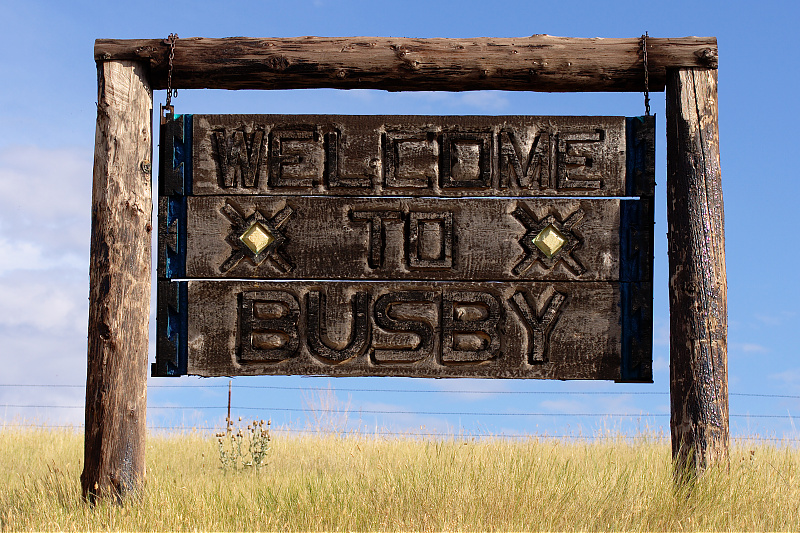
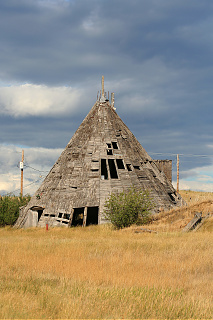 Busby is a little town which got its name from white trader – Cheyenne call it White River place. There’s rather little to see there, except for beautiful country (prairie), but you might want to stop by Two Moons monument (placed to honor Cheyenne chief) and abandoned souvenir store which looks like enormous wooden tipi.
Busby is a little town which got its name from white trader – Cheyenne call it White River place. There’s rather little to see there, except for beautiful country (prairie), but you might want to stop by Two Moons monument (placed to honor Cheyenne chief) and abandoned souvenir store which looks like enormous wooden tipi.
From Busby one may drive to Rosebud Battlefield, for Cheyenne better known as Where the Girl Saves Her Brother. The battlefield itself is a pleasant change from close Little Bighorn Battlefield with all the commercial “circus” that disgusts even from the distance (as per Cheyenne saying “The Sioux got the glory, the Crows got the land, but the Cheyennes did the fighting”, but hey, you’ll even get KFC there!). The Cheyennes do not look for fame, they don’t need great reenactments and glorification of own past. Incidentally with my involvement one movie about tribe’s history (“Wolves of Heaven”) simply has never took off the ground, the author and producer were dismissed by elders: “we feel indifferent whether this movie will be made or not, but if it’s going to be made, it shall tell the truth about us, and not one’s idealized dreams and myths”. Thus Rosebud is a remote, overlooked place of solitude where one can sit back and listen to the wind while you reflect on what’s happened there. In this battle, on June 17, 1876, while not victorious, Cheyenne and Sioux warriors suspended general Crook’s army from advancing into Indian Territory, which was a prelude to George Custer’s defeat at Little Big Horn 8 days later. The Cheyenne name of the battle comes from Buffalo Calf Road Woman, sister of Chief Comes In Sight. She raced in the battle to save him as his horse was killed and he was left alone fighting Crook’s Crow scouts. She succeeded and they rode together on her horse accompanied with cries of warriors in honor of her courage. It is said, that both the scouts and the soldiers honored her as well. Gene tells the story, I like very much: how proud he is to pass it to someone, but so much humbleness he is speaking the words with.
I regret a little, that I hadn’t had a chance to take more photos of the reservation. Thanks to Tony I have a great deal of photos of Cheyenne lands, but there’s only a handful of towns across the rez. The lodges at the reservation are usually prefabricated, wooden houses, some even relatively big. Many of them look really saddening though, especially in west Lame Deer: with broken windows and a lot of trash laying around. You’ll often find some improvised appliances like children playgrounds put by them, but mostly you’ll see broken car or cars kept for spares. In Birney, where many of tribes most traditional, elderly people live, it’s even worse. It’s said, that the running water quality is so bad, that people need to have water transported to town in tanks. Obviously that reflects the conditions of people living there – they struggle against alcoholism and drugs, which means crime and destruction of family lives. As Tony says “It’s hard to be a Cheyenne, but it’s good”, it shapes your spirit.
There’s not a lot of job opportunities in the reservation. Many young Cheyennes already face the dilemma if they should stay, move off to nearby Billings or even further, or simply catch whatever job is offered, be it blue or white collar, as long as it helps to care for family. Many are skilled firefighters, helping to put out seasonal forest fires. Some leave early to study, and come back with hopes of starting their own businesses. But it’s a devil’s circle: the reservation community is small and little people actually have jobs and that means- money to spend, very little of such endeavors takes off the ground.
Their poverty also should be viewed on different terms: limited access to good education and health care. While Northern Cheyenne Tribe has its elementary school, high school and even a college, these are lacking funding and sometimes also a skilled personnel. There’s also issue of St. Labre Indian School. This catholic school is providing education for estimated 450 children and youths from Cheyenne reservation. By a letter campaign picturing the people on the reservation as poor and unable to care for themselves, it receives large amount of money (estimated 20 million dollars income a year). And yet, they had done little to support these very people (and if, for most their students and their families). Ironically, historically St. Labre was the boarding school, where the Cheyenne were supposed to be assimilated into society of white people, stripping their language, heritage and way of life and thus being mostly responsible for the state they portray. The ongoing lawsuit, seeking either ceasing of that portrayal or sharing the income with the tribe, is being stalled, and created stir and uneasiness on the reservation. It is a place to offer jobs for some Cheyennes – if it closes (because they can), they will loose work. For young ones the only alternative to that would be the own tribal education with all its flaws, or public education out of reservation.
There’s only one clinic for the whole community, the nearest hospital is about 40 miles away on the Crow reservation. In serious cases of emergency people are taken with the helicopter all the way to Billings.
A serious problem of tribal services is corruption: government grants to programs, which are supposed to help the tribe develop, go to pockets of individuals. In fact that’s why Eugene was voted into president’s office: to put an end to it. In the end it costed him the presidency anyway. The tribal council and tribe’s vice-president, people whom he trusted, used him. They stopped working for the tribe as entity only to support their own families and friends. They in turn used that protection to exercise both financial and physical abuse of other Cheyennes. The best example would be taking over the lands owned by older people by binding them to unjust and legally unclear deals. By intervening Eugene has become a threat to their power and thus was about to pay dearly in the near future.
In the early 2006 the Cheyennes were to decide about what could mean a turning point in their history in many aspects: they voted on allowing mining their rich coal and also coalbed methane deposits on the reservation. When you look at it, it’s one of things Sweet Medicine, the man who they say shaped the Cheyenne into the noble and strong tribe they used to were, was warning their ancestors about. Mining minerals would be one of ways for Cheyenne to cease to exist. On the other hand, a Cheyenne legend predating his time says that the buffalo told them that if they are gone, the Cheyenne should look for them underground, so it was interpreted: the coal is the modern day buffalo. The people were aware of the environmental risks, they didn’t need to look far – on the western border of the reservation is town called Colstrip – if you take a good look on the sunny day, you will see the plume of smoke from chimneys there. They were also aware that developing methane pollutes water. There was no established plan on how big the proceeds from coal development would be, or how they would be distributed within the tribe. And yet, the people voted to support mining. As it was not majority, Eugene challenged the verdict, declaring that the tribe will not rush into development. From that day, the council tried to oust him three times. It took its toll on him pretty badly. When I saw his photo from that time, a tear ran down my cheek – he looked much older than he was, with blank, worn off sight. Luckily, since then, he’s back to being the strong, vigilant, warrior-type person I used to know.
In the end, the Bureau of Indian Affairs intervened, based on opinion of a family member and a person in close ties to adversarial tribal council members. Eugene stood strong, as were his supporters, who gathered in his office so he would not leave it. BIA then used a SWAT team to remove them all by force. To add insult to injury, the council later put him on jury trial for criminal mischief, but he was unanimously declared not guilty – a deed that “restored his hope in Cheyenne people”. As far as we could tell, the council was preparing some kind of deal with mining company, but everything about it was mere rumors than facts. In fact that’s how mostly it goes on the rez: by rumors. I could hear them, people were saying things that I didn’t know what to make of them. In the end, just trying to be impartial, yet it’s hard to be indifferent as what I hear sometimes is very unsettling – you just don’t know who to trust.
Rumors aside. What’s interesting to note is that there’s a very strong bond within and outside Cheyenne families, whoever that wouldn’t be, you will finds “aunties”, “grandmas”, “bros”, “sisters”. In fact, it struck me how really open the people are: Eugene’s kids did not have any reluctance to play with me, even though I was just a friend – a person they have barely known and not a family member. This is mainly due to tribalism of the native people: there’s a Cheyenne word “ni si ma haa” which means brother-friend, when friends become as close as brothers. I secretly hope Eugene knows he’s one to me. What I also observed is that no matter which house you go, you will always find a lot, and I mean it, of old photographs of families and their relatives with recognitions of achievements of their children, hanging around the walls – Cheyennes embrace achievements, even very simple ones, very much.

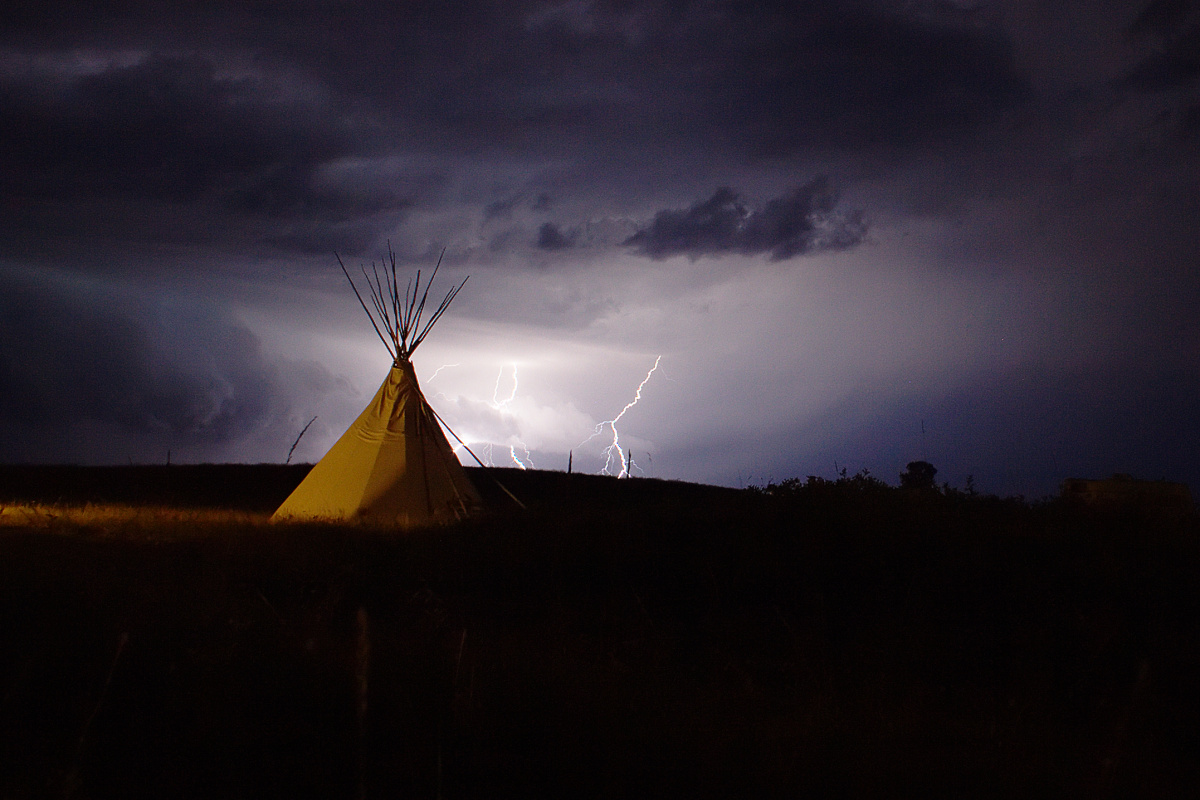
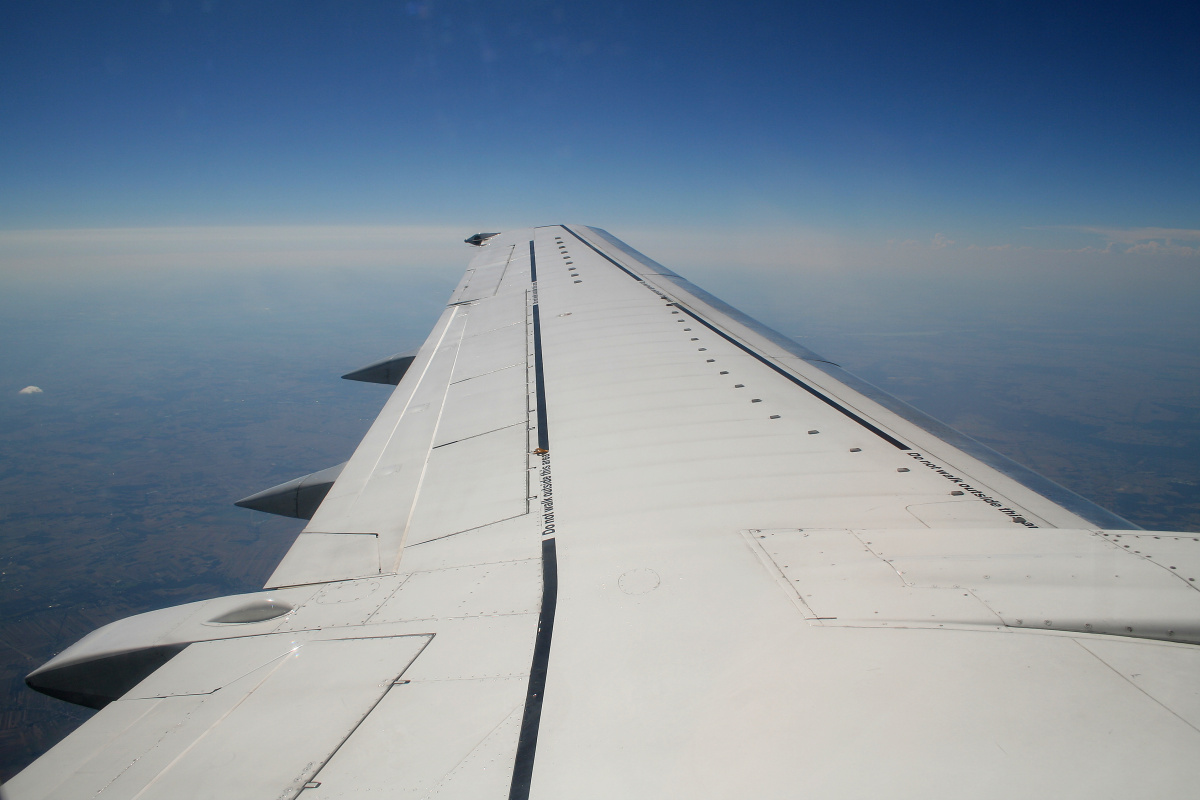
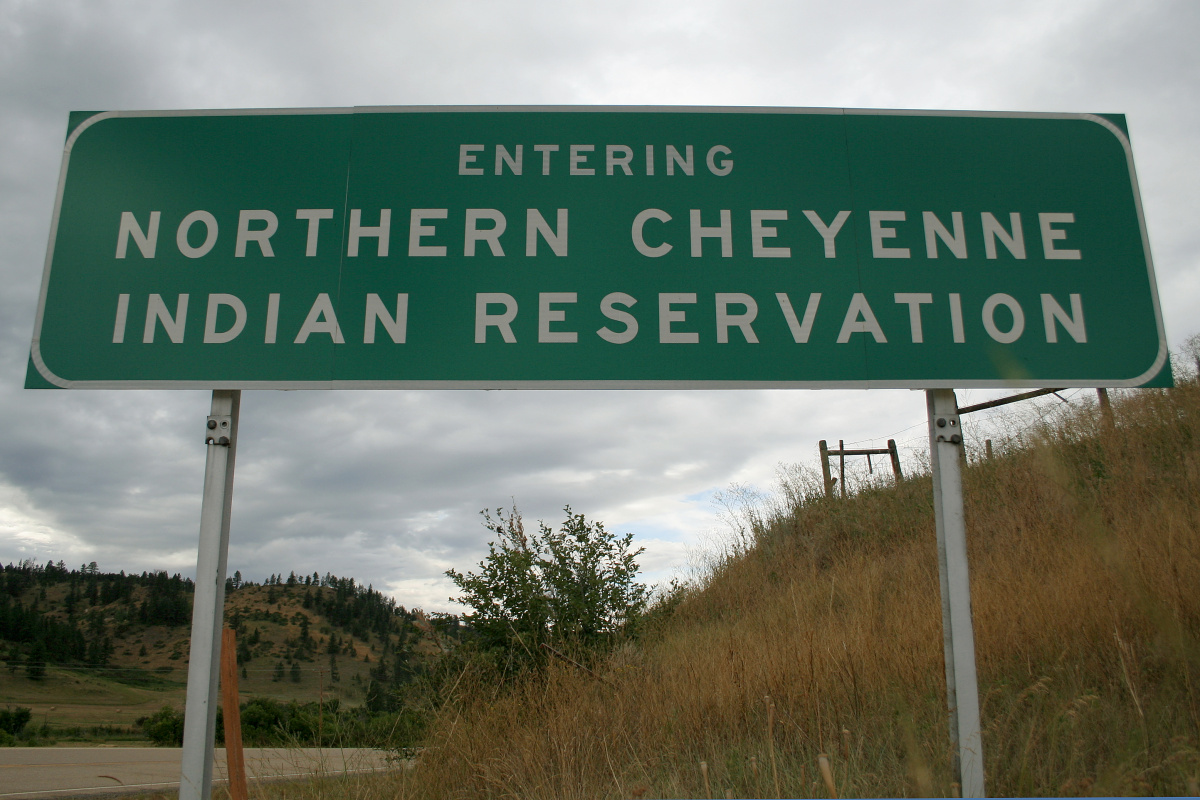
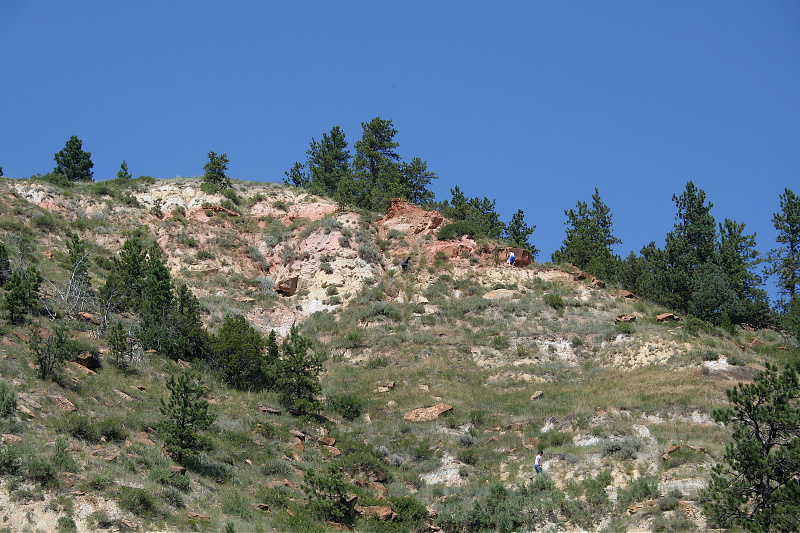
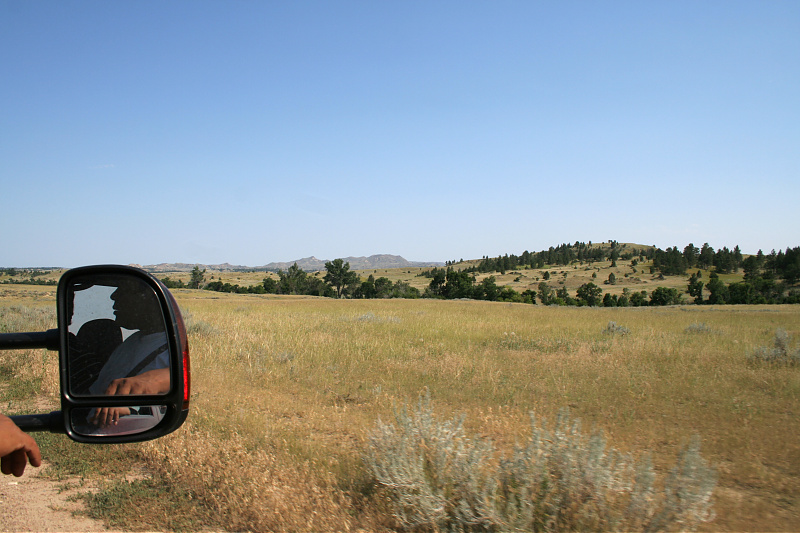
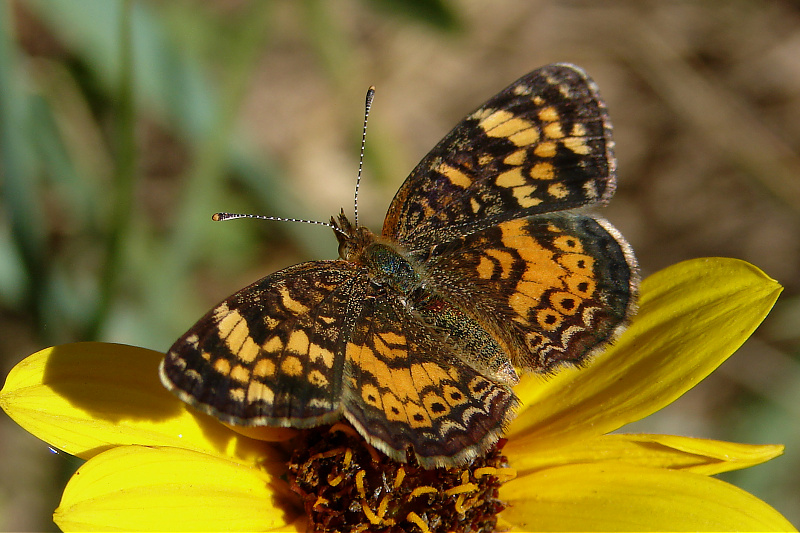
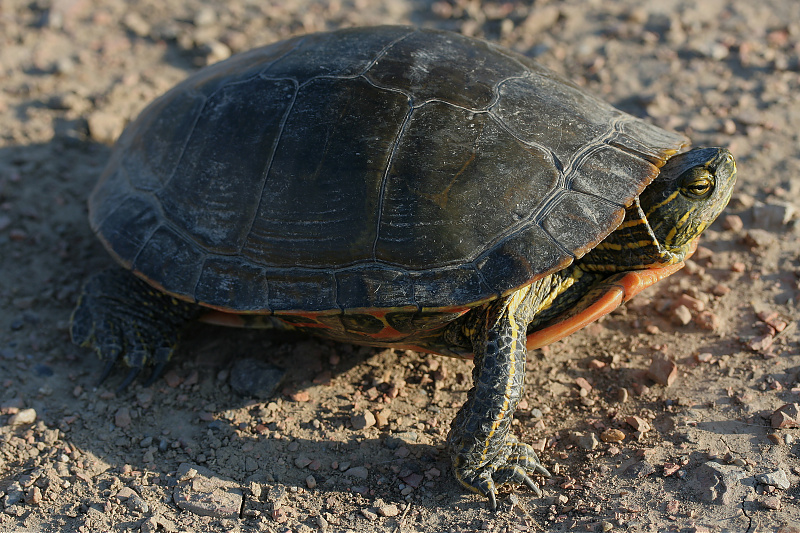
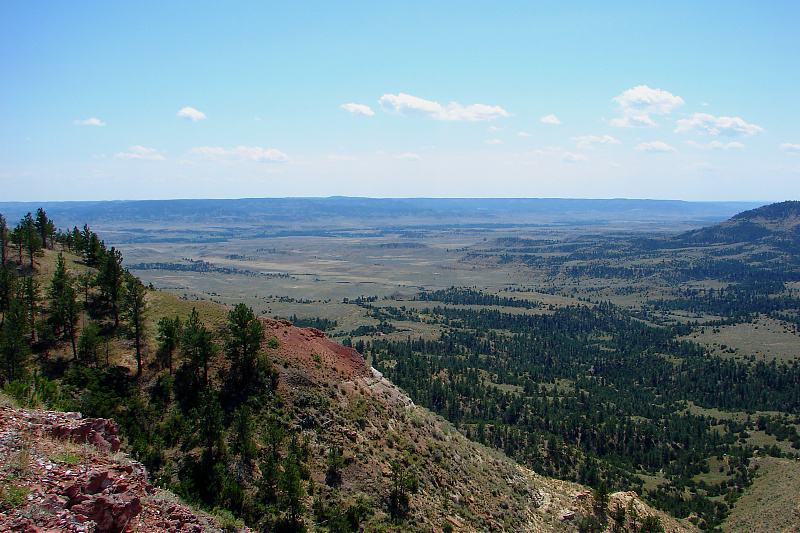
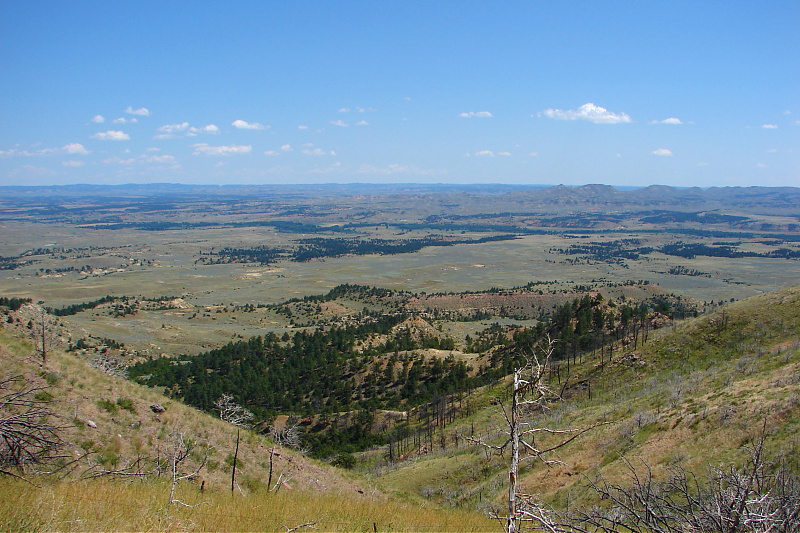
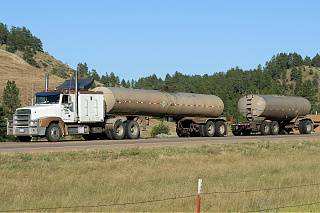

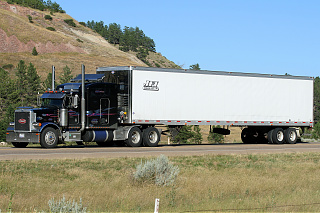
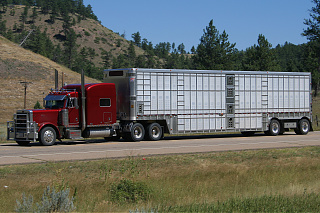
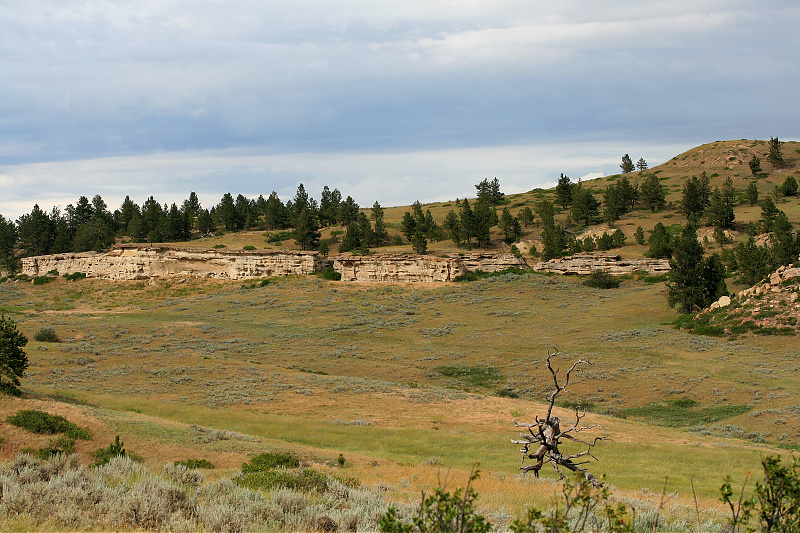
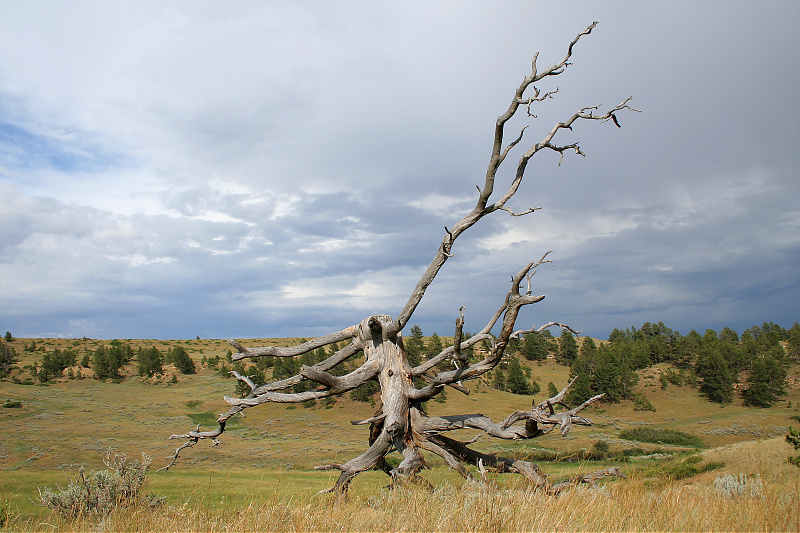
So far what I read is indeed really interesting.
thanks for sharing
Comment by dea — March 15, 2012 @ 11:23 am
Hi Rambo!
I am looking for a way to contact you about using one of your images for a Native American Musical being workshopped for Broadway. Please contact me at Marisa@MarisaQPhotography as soon as possible – thank you!
Comment by Marisa Quinn — January 31, 2013 @ 1:48 am